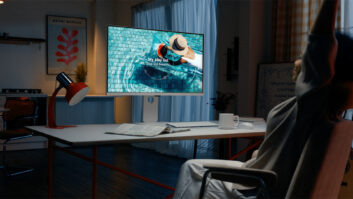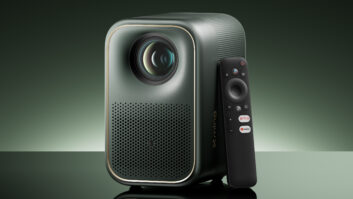This year could prove to be one full of ups and downs for LCD computer monitor suppliers, who will most likely see continued price increases in some monitor sizes and even renewed competition from CRT screens, as industry-wide glass shortages remain an obstacle for at least the beginning of the year.
Sales of LCDs continued to rise last year, fueled by lower price points and consumer’s desire for sleeker looking product, and even overtook those of CRT monitors for the first time last spring. But several things could impact growth in certain segments in 2004. Suppliers say they expect to see continuing shortages through the first quarter of this year for panels for 15-inch and 17-inch LCD monitors, which will keep prices as high as they were going into fourth quarter last year.
Industry insiders say they expect growing notebook computer sales, which surpassed that of desktop PCs in dollar sales last May, combined with growth in the LCD TV market, will leave computer monitor suppliers scrambling for glass panels. However, they will find themselves on the short end of the stick.
“This year will be very interesting. There’s a huge amount of competition for LCD panels. Notebook manufacturers, suppliers of PCs, LCD/TV products — all are trying to buy from LCD manufacturers,” said Ann Wilcox, director of consumer products for ViewSonic. The outcome of this will be shortages in 13-inch, 15-inch and 17-inch LCD screen sizes, she predicted. “I’m expecting in 2004 that 15-inch and 17-inch panels will compete directly with notebooks. Notebooks and LCD TVs have higher price points and panel makers win when they sell to them,” Wilcox said.
Another real area of pressure going forward, in addition to that from notebooks, according to Wilcox, will come from the growing hybrid TV/PC monitor market. “We are even seeing a demand again for 17-inch CRTs”, said Samsung’s product manager for monitors Monica Islas.
“When prices on 15-inch LCDs jumped back to around $329-$349 last year, people starting going back to 17-inch CRTs.” Islas predicted consumers would be lured back to 15-inch flat panel when the delta drops again and the average 15-inch LCD is again selling under $300. That is expected to occur in the second quarter.
Islas agreed that laptop sales will cause problems for LCD suppliers vying for glass, “But by the second quarter we should see relief, with panels more available, as companies such as Samsung come out with their 7th-generation product lines.”
The bigger picture, however, shows LCDs continuing to grow in leaps and bounds over CRT, with that lead extending, according to Steve Baker, industry analysis director for The NPD Group, Port Washington, N.Y. “There was 70 percent to 80 percent growth per month over the previous year in 2003,” Baker said.
Within the LCD category, “15-inch and 17-inch product are very close in market share now, with 17-inch typically leading in dollar sales and 15-inch in units. But shortages in 15-inch screens means consumers may not see as many promotions at retail, and will continue to trade up to 17-inch,” Baker said.
According to Gene Ornstead, director of business development for ViewSonic, 17-inch screens were the sweet spot last year, bringing in the highest volume for ViewSonic and becoming the norm, with 19-inch becoming the next step-up size.
The biggest growth this year will come from 17-inch and 19-inch monitors, predicted Islas. “This past year (third quarter
2002 to third quarter 2003) saw 15-inch sales decrease by 26 percent while 17-inch increased 30 percent. In 2004 we will see retailers carrying more 17-inch as entry level products, but bringing in 20- and 21-inch to raise revenue. The retailers will cut back on 15-inch.”
“What’s very positive is that retailers have been aggressive about promoting entry-level product, but they are also reminding customers that there are a variety of sizes, and that there is value in 15, – 17- and 19-inch screens,” said Baker. He noted that suppliers are purposefully limiting their CRT selections as a way to force people to upgrade to LCD.
KDS, which plans to be the last man standing in terms of CRT screens, is happy about its comeback, even if it is temporary. KDS’ Marketing VP Erin Rippee said this year will definitely mark a return for the CRT. Since prices rose last year, consumers are not buying 15-inch monitors and this “has pushed people to 17-inch CRTs, which have seen an upscale in flat screens.”
Consumers began turning back to CRTs at the start of fourth quarter 2003, when prices on 17-inch LCD monitors rose by 7 or 8 percent, and 15-inch screens rose by about 10 percent compared to the same period a year ago, according to Samsung’s Islas. She noted that about 30 percent of retailers will continue to carry CRT into the future.
There is also a shortage of 17-inch LCDs to contend with, but not due to glass shortages, according to Rippee. He attributed the lack of these monitors to issues with color filters.
When the price delta between 15-inch and 17-inch LCD gets closer to $50, we will see a huge move to 17-inch, said Bob Davidson, vice president of global product planning for eMachines, who predicts that will happen in the second quarter. All of this will make 17-inch screens the big winner in LCD this year, he said.
“Last year’s boom in 15-inch will be tempered this year by pricing,” Davidson said.
Competition is expected to pick up this year from a hybrid product, an LCD monitor with a TV tuner built in. Designed for use as a PC first, it offers the user the ability to receive TV functions from their desktop for just a few dollars more. A 15-inch LCD-TV screen carries a retail price of about $400, vs. a PC LCD screen in the same size for $250. Expect to see sales of flat-panel LCDs impacted by the segment sometime this year, Baker said. Then it will be a challenge to see how the retailer will merchandise and manage the category along with the hybrid category. “Where will it go in the store?”
ViewSonic is betting there is a market for the hybrid product and will add to its product lineup in that segment this year. It already offers a 17-inch, 20-inch and 27-inch. It is questionable whether the PC user needs a 27-inch flat screen, said Ornstead, who noted the customer who does is more likely to be a professional graphics user because they like the screen width.
The hybrid — an LCD with video and computer capabilities — is becoming more of a factor as the consumer becomes savvier. The expectation is that interest in the U.S., which lags behind other countries in this segment, will be more of a factor once LCD TVs take off and the American buyer has a better understanding of flat panel in general. Right now, just 1 percent of the LCDs have video and computer capabilities, while 10 percent do globally, Islas said.
“Next year, 5 percent of all sales will be LCDs with computer and TV capabilities,” said Islas. More people are now seeking out what was once a niche product. A 15-inch, which runs for about $499, is being bought by people that need a second TV but also need a computer monitor.”
Samsung will put muscle behind its larger screen sizes for this year, and will concentrate on 19-, 20-, 21-, 24- and 42-inch screens — the largest being made available in plasma technology.
Industrywide, the 19-inch LCD monitor, which accounted for 2 percent of sales in 2003, should rise to 3 percent this year, said Islas. The consumer wants the 19-inch screen (expected to reach $799 average street price this year) more and more in their home office, and they are becoming more and more interested in the 21-inch size, which is selling for about $1,199.
Overall, predicted Islas, “2004 will be a strong year. Larger screens will get more visibility and there will be more demand for digital interface. The screens will get smaller and thinner, with some less than one-inch in depth.”











